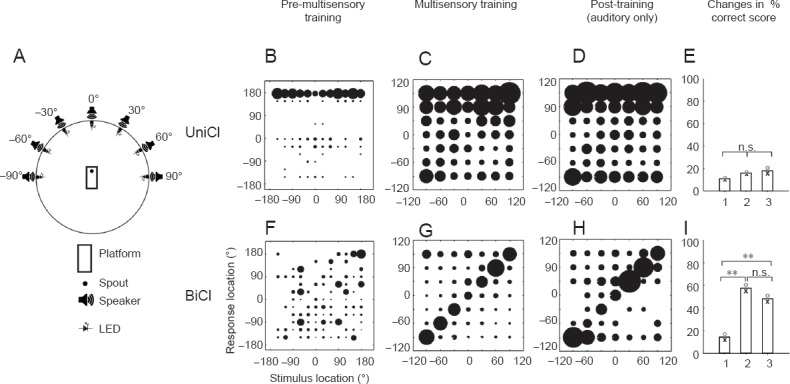Figure 1.

Effect of multisensory training on sound localization accuracy in ferrets with early-onset hearing loss.
(A) Testing chamber with 7 loudspeakers and light-emitting diodes arranged at 30° intervals in the frontal hemifield. Stimuli consisted of brief broadband noise bursts (1,000–2,000 ms) from one of the 7 speaker locations and were triggered by the animal licking the central spout. Each trial was concluded by a water reward if the animal approached the correct speaker location. The animals were first trained on a task with 12 speakers circumferentially arranged within the chamber. Auditory performance of the ferrets with a unilateral CI (UniCI, B–E) or bilateral CIs (BiCIs, F–I) are grouped by training experience. (B, F) Stimulus-response plots using all 12 loudspeakers covering the full 360° of azimuth (as in Figure 4A) prior to the start of multisensory training with the multisensory setup. The size of each solid circle in a given location represents the proportion of responses made at that location. At this stage, no difference was found between the performance of animals with a unilateral CI and those with bilateral CIs. (C, G) Stimulus-response plots for the final session of multisensory training. Subsequently, the visual stimuli were discontinued and animals were trained with auditory stimuli only for another 10 sessions. (D, H) Stimulus-response plots for the last of these sound-only sessions. (E, I) Mean percentage correct scores before, during and after multisensory training. No change in auditory localization performance (proportion of correct trials) was found in the ferrets with a single CI, whereas multisensory training resulted in a significant improvement in the bilaterally-implanted animals, which persisted after removal of the visual cues. n.s: Not significant; **P < 0.001.
